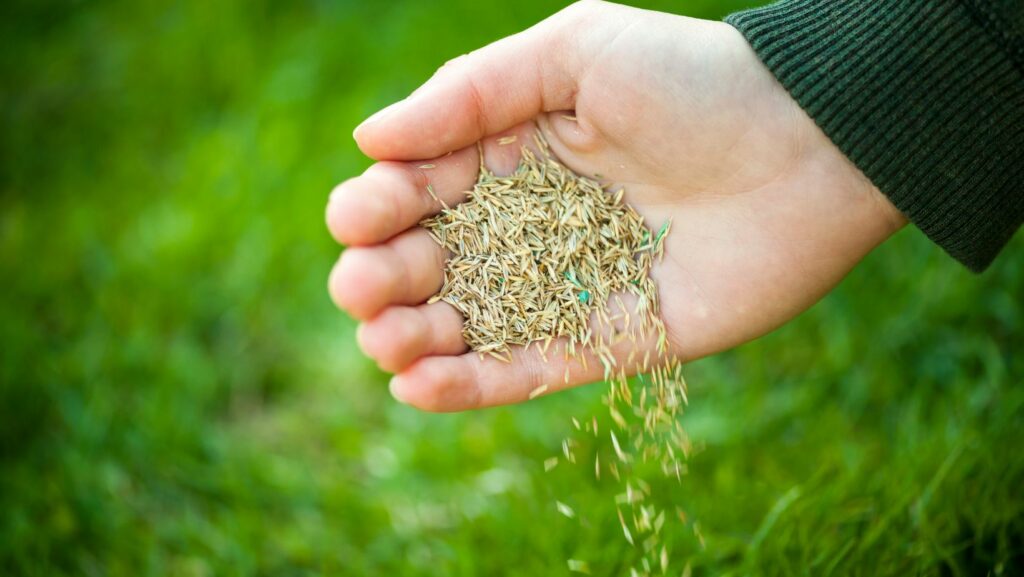
If you’re a lawn enthusiast, you know that achieving a lush, green lawn requires proper care and attention throughout the year. While most homeowners focus on lawn care during the spring and summer months and early fall, neglecting your property during the winter can lead to a lackluster lawn come springtime.
However, a secret technique known as dormant seeding can help you get a head start on your lawn’s health, even in the colder months. Learn dormant spring seeding tips and techniques to ensure winter success for your lawn.
What is Dormant Seeding?
Dormant seeding is a technique gardeners and lawn care enthusiasts use to plant grass seeds in the winter. Unlike with warm-season grasses, snow seeding is done when the ground is cold and the grass is dormant.
It involves sowing grass seeds on bare soil, existing lawns, or even in areas with bare spots. The key to successful dormant seeding is ensuring the seeds come into contact with the soil.
Steps For Successful Sormant Seeding
Choose the right grass seed
Opt for grass seeds with a high germination rate to maximize your planting and chances of success. Select good-quality grass seed suitable for your region and the conditions of your lawn (https://www.naturesseed.com/grass-seed/).
Timing is crucial
Dormant seeding should occur in late fall or early spring when soil temperatures are low. Avoid doing it in the dead of winter when the ground is frozen solid. Late fall or spring, particularly in October or early November, is the optimal time for dormant seeding, as it allows the grass seeds to establish themselves before winter truly sets in.
Preparing the soil
Ensure that the soil is well-prepared for frost seeding. Remove any debris or dead grass from the area and level the ground. Mowing your lawn short before dormant seeding is also good to ensure better seed-to-soil contact.
Seed-to-soil contact
The most critical aspect of dormant seeding is the germination process, which ensures the seeds have direct contact with the soil. You can achieve this by lightly raking the soil before sowing the seeds.
Fertilize and mulch
Consider using a starter fertilizer to provide essential nutrients to the new seedlings. Mulch the area with a thin layer to retain moisture and protect the seeds from harsh winter conditions. This mulch layer also provides insulation from the cold, preventing the soil from freezing and thawing too rapidly.

The Science Behind Dormant Seeding
During the winter, snow cover and freezing temperatures create ideal conditions for grass seeds to remain dormant until the right moment. As the snow melts and the ground thaws, the seeds begin germinating.
This natural process allows the grass to adapt to its environment, making it harder and better prepared to withstand the challenges of the growing season ahead.
The Dormant Seeding Advantage
Why should you consider dormant grass seeding for your garden? Well, there are several advantages to this technique.
First and foremost, dormant seeding works effectively for cool-season grasses like Kentucky bluegrass, perennial ryegrass, and fine fescue. These grasses thrive in colder temperatures and can germinate even during the winter when the ground thaws and freezes intermittently.
Moreover, the dormant seed gives your lawn a head start in the spring, allowing the grass to establish itself before the warmer months.

Caring For Dormant Seeded Lawns
After you’ve completed the dormant seeding process, continue to monitor your lawn during the winter months. Consider applying additional reseeding to existing soil during excessive traffic or heavy rain periods.
Additionally, avoid applying post-emergent herbicides immediately for several weeks after dormant seeding to avoid harming the new seedlings.
Last Words
Dormant seeding is a valuable technique for lawn enthusiasts looking to improve the health and appearance of their existing lawn. Following the proper steps, you can achieve winter success and enjoy a vibrant lawn come spring. Don’t let the winter months put your green dreams in hibernation. Instead, try dormant grass seeding early in the fall and watch your lawn thrive.



